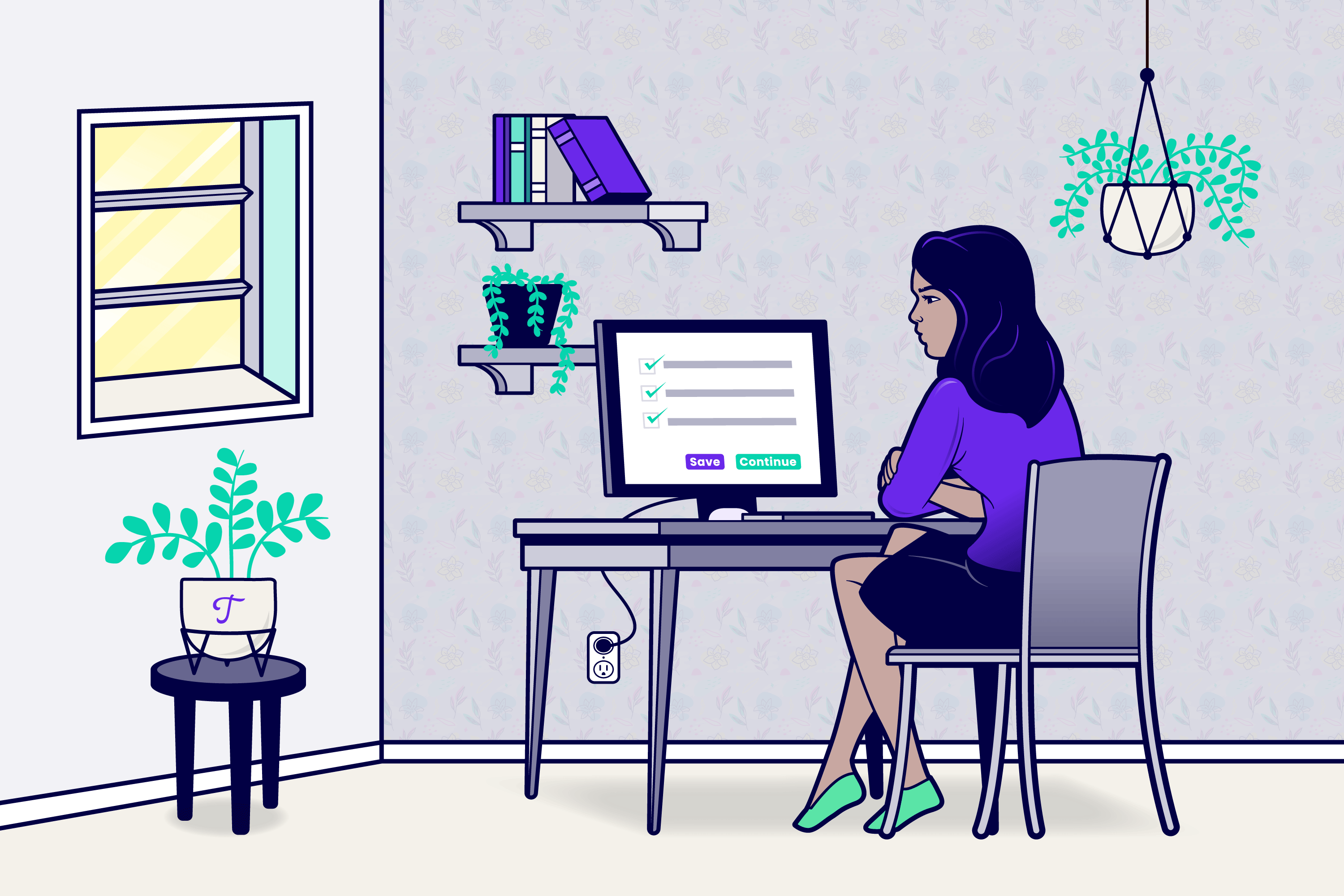
Articles
Asynchronous Learning Activities for Remote Employees
August 25, 2022

The start of the pandemic led to a dramatic shift in workplace dynamics. Moving to a remote work environment might have forced us all to test uncharted waters, but as things return to “normal,” companies are finding that their employees aren’t exactly eager to ditch the desk in their home office.
In fact, a majority of employees prefer remote work because of the flexibility it offers.
However, according to a Pew Research Center study, a third of remote employees find it hard to stay motivated while working. It’s easy to get distracted in the comfort of your home, and the lack of in-person interaction can make things pretty quiet.
.gif)
Engaging work material can help combat this.
Employers are adapting and looking for ways to get their employees motivated from their homes. And a great way to keep employees engaged is through growth and learning opportunities.
Conducting learning activities with a remote workforce gives your team those opportunities, and helps keep them connected.
Keep asynchronous learning activities and materials engaging and accessible
Asynchronous learning offers a valuable opportunity to make learning engaging and (most importantly) accessible. It gives employees the chance to move at their own pace and offers them multiple ways to engage with learning content.
Plus, it means that there’s onboarding material readily available whenever you need it, so it’s pretty much a win-win.
Start with your knowledge base.
Learning has to start somewhere! And knowledge base offers a springboard for asynchronous learning by housing all of the general knowledge your employees may want to revisit as they get started.
Asynchronous learning can turn into a daunting task if it feels overwhelming, and even your most seasoned experts will need a refresher from time to time. A knowledge base gives everyone an easy tool to use as they broaden their horizons or hone in on one topic to become an expert.
Your knowledge base hosts information about the ins and outs of your company’s products, services, and offerings. By refreshing your employees’ knowledge about the business as a whole, you can nail down the basics before moving on to more complex processes.
Plus, it gets the less engaging “refresher material” out of the way, so that you can keep things fast-paced and avoid reiterating old content if it isn’t needed.
Your knowledge base should be referenceable throughout learning activities to make complex material more accessible.
Build a company wiki.
Much like any other wiki, a company wiki is an easily updatable place for company knowledge to be stored and added.
Luckily, you don’t need to worry about random subject experts adding their hot take to your wiki — it’s exclusively for you and your team to create and update.
It’s the perfect opportunity for you to have different subject owners and content experts share their knowledge. This way, everyone can become experts in areas they wouldn’t otherwise be exposed to!
The best part? Company wikis allow your employees to search for content.
That means that workplace learning can be as simple as recreational learning employees do on their own time. An intuitive process grants easy access to knowledge they want or need to know.
Your experts may even experience the protege effect, AKA when teaching a subject helps the person learn that information as well. When you create a collaborative environment for asynchronous learning, you create new experts while positioning your seasoned team members to deepen their understanding of the subject at the same time.
.gif)
Leverage video resources.
You want your asynchronous learning to be engaging as possible, right?
We’ve all zoned out during meetings or web training, but like your favorite teacher once said, learning can actually be exciting!
Asynchronous learning allows you to be innovative and engaging with your learning materials. Breaking up information with different ways to access content does a lot to keep people engaged.
Rather than reading through employee manuals, you can include video training.
A good starting point is figuring out what content would best be presented visually. Maybe there’s a process in your workplace that always gets people stuck — now you have a helpful video to show them how it’s done!
Recording content is easy, and services like Loom even allow you to capture recorded screens. Plus, it integrates easily with Trainual’s service.
Asynchronous learning can be interactive
Discussion boards and blogs.
Your employees can learn a lot from one another through collaboration — even when they’re remote.
Facilitating interaction in your workplace is a great way to keep everyone informed and engaged. Use discussion boards and other communication tools to ensure an exchange of knowledge goes smoothly.
Many companies use Slack for their internal communications, but it’s much more than coordinating meeting times. Slack allows your employees to ask questions, leave comments, and suggest best practices. You can even set up channels for your teams to share their reflections or relevant case studies of their work.
Slack also integrates easily with your knowledge base and company wiki if you’re using Trainual.
You might even host a blog and invite team members to contribute on a rotation. This is also a great opportunity to draw on outside knowledge so that employees can share more about how their experiences at home contribute to their success.
Gamify learning.
Gamification, or the use of elements typically found in games to encourage engagement, is a great way to get your employees to interact with your learning activities. The more fun they have with learning, the easier it'll be for them to soak up knowledge. In fact, training games are proven to help with retention.
Things like point-based games or competition during the learning process are ways to gamify your learning materials. Try to add quizzes or live polls. You can even have leaderboards and give out prizes to add a clearer competitive edge to learning.
.gif)
Most of all, these activities are meant to make learning interactive.
For example, have you ever heard of the Wikipedia race? The only way to win is to navigate from one Wikipedia page to another using only the links provided. The quickest player wins! You could try this with your company wiki.
Make learning a part of your business’ culture
Learning is important for your employees and your business. The more you make knowledge sharing a core part of your company culture, the more your employees will retain important information and appreciate your support.
In this day and age, learning activities don’t need to be restricted to lifeless webinars and employee manual homework.
For remote workers, asynchronous learning is a way to maintain flexibility in their busy schedules. There are many ways to make your learning activities more efficient: a knowledge base, a company wiki, video lessons, and even games!
Different knowledge management software, like Trainual, can help you keep asynchronous learning more engaging — even if your team is remote. With these helpful steps and tools, you can advance your asynchronous learning to the next level.
Similar Blog Posts










